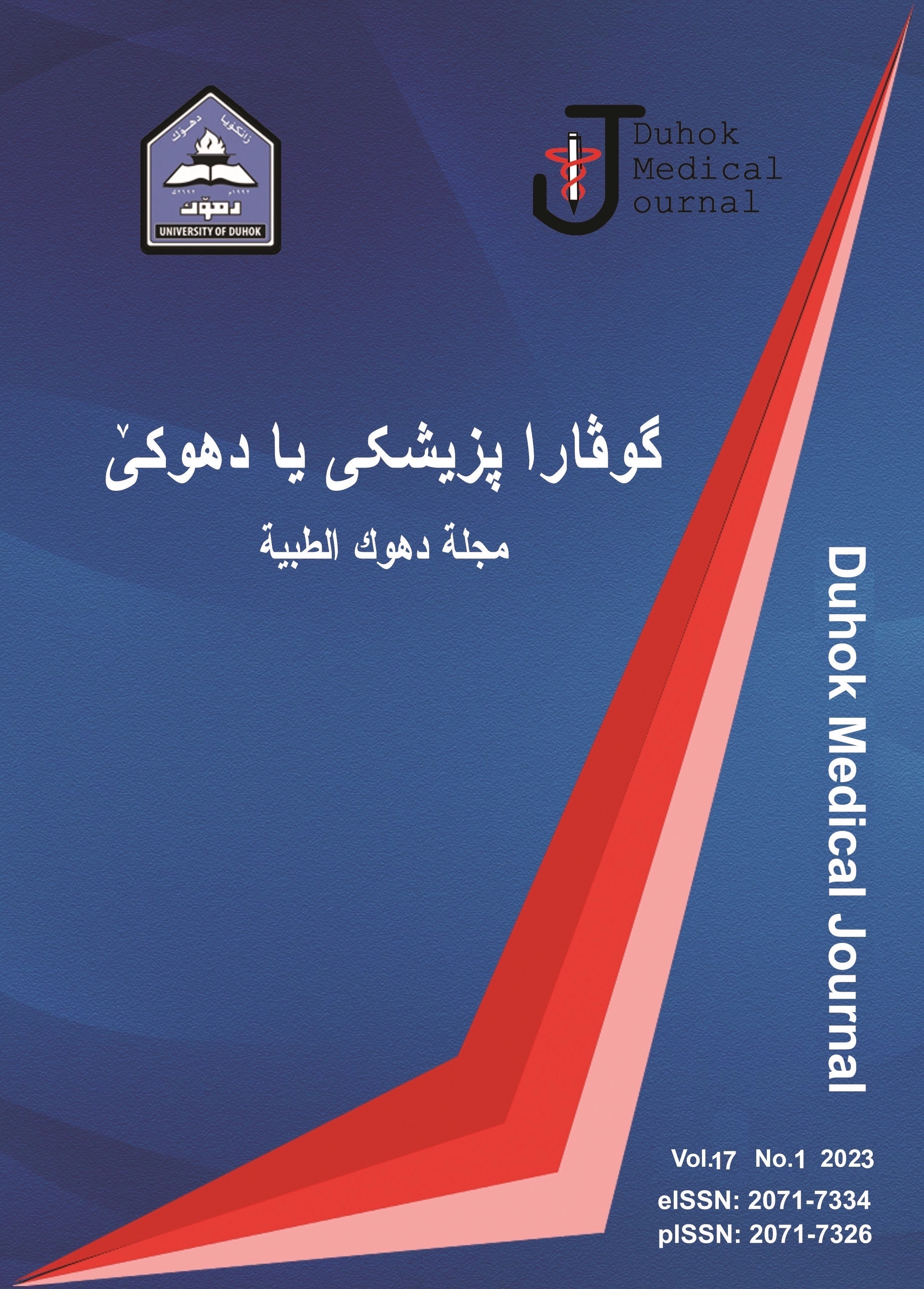TRICHOSCOPIC COMPARISON BETWEEN TELOGEN EFFLUVIUM AND ANDROGENIC ALOPECIA
Abstract
https://doi.org/10.31386/dmj.2023.17.1.5
Background: Alopecia, is a major condition that affects both sexes and people of all ages. Hair loss is the most common reason for women to consult a dermatologist, apparently because of cosmetic reasons. Androgenetic alopecia and Telogen Effluvium have greater rates of occurrence and sensitive responsiveness to timely treatments. Trichoscopy helps in diagnosis, determining the biopsy location, and providing prognostic information. Dermatologists can examine the scalp with a handheld dermoscope (x10 magnification). Vascular patterns, follicular and perifollicular features, and hair shaft features are among the dermoscopy results.
Objective: To compare the prevalence of trichoscopic characteristics of the scalp in Androgenic Alopecia and Telogen Effluvium on the basis of follicular patterns, interfollicular patterns, and hair features.
Methods: The study is a cross-sectional study conducted at the Azadi teaching hospital, in the Department of Dermatology, Venereology from December 2021 to May 2022, on a total sample size of 80 patients diagnosed clinically to estimate the prevalence of trichoscopic characteristic differences in each androgenetic alopecia and telogen effluvium using the Dermlite DL4 dermoscope, which allows for 10-fold magnification of the examining area .
Results: Among the eighty cases, 40 cases had Androgenetic alopecia and 40 had telogen effluvium. In telogen effluvium, heterogeneity in hair shaft diameter in frontotemporal areas (15%), vellus hair (32.5%), Up growing hair (65%), 1-2 hair per follicle (17.5%), 3-multiple hair per follicle (82.5%), Yellow spots (5%), peripilar sign (20%), and are some of the most common results. in patients with Androgenetic alopecia, the distinguishing observation is that hair shaft diameter variation is common in the fronto-temporal and occipital regions (100% percent). Increase in number of miniaturized hair more than 20% is (97.5%), vellus hair (70%), upgrowing hair (27%), 1-2 hair per follicle (60%), 3- multiple hair per follicle (40%), yellow spots (57.5%) and Peripilar sign (35%) are all follicular characteristics found with androgenetic alopecia.
Conclusion: Trichoscopy is a good tool for differentiation between the two diffused alopecia androgenic alopecia and telogen effluvium. On Trichoscopy, in androgenetic alopecia the fronto-temporal zones had the most variation in hair shaft diameter. The peripilar sign, yellow spots, and empty hair follicles were the most common follicular features. Miniaturized hair was the most common hair shaft pattern seen androgenetic alopecia. On Trichoscopy, telogen effluvium is described as disease of exclusion needs further research. It's vital to distinguish this disorder from androgenetic alopecia, which has hair shaft thickness variations in the fronto-temporal areas but none in the occipital.
Downloads
References
2. Shapiro J. Assessment of the patient with alopecia. In: Hair Loss., editor. Principles of Diagnosis and Management of alopecia. 1st ed. London: Martin Dunitz Ltd; 2002.
3.
4. Ross EK, Vincenzi C, Tosti A. Videodermoscopy in the evaluation of hair and scalp disorders. J Am Acad Dermatol 2006; 55 :799-806.
5. Lacarrubba F, Dall'Oglio F, Rita Nasca M, Micali G. Videodermatoscopy enhances diagnostic capability in some forms of hair loss. Am J Clin Dermatol. 2004; 5:205–208.
6. Mulinari-Brenner F, Bergfeld W. Entendendo o Eflúvio Telógeno. An Bras Dermatol. 2002;77:87-94
7. Baldari M, Guarrera M, Rebora A. Thyroid peroxidase antibodies in patients with telogen effluvium. J Eur Acad Dermatol Venereol 2010;24:980-2.
8. Chen W, Yang CC, Todorova A, Al Khuzaei S, Chiu HC, Worret WI, et al. Hair loss in elderly women. Eur J Dermatol 2010;20:145-51.
9. Gilmore S, Sinclair R. Chronic telogen effluvium is due to a reduction in the variance of anagen duration. Australas J Dermatol 2010;51:163-7
10. Sinclair R, Jolley D, Mallari R, Magee J. The reliability of horizontally sectioned scalp biopsies in the diagnosis of chronic diffuse telogen hair loss in women. J Am Acad Dermatol. 2004;51:189–99.
11. Ong KH, Tan HL, Lai HC, Kuperan P. Accuracy of various iron parameters in the prediction of iron deficiency in an acute care hospital. Ann Acad Med Singapore. 2005;34:437-40.
12. Biondo S, Goble D, Sinclair R. Women who present with female pattern hair loss tend to underestimate the severity of their hair loss. Br J Dermatol. 2004;150:750–2.
13. Itami S, Inui S. Role of androgen in mesenchymal epithelial interactions in human hair follicle. J Investig Dermatol Symp Proc 2005;10(3):209-11.
14. Biondo S, Goble D, Sinclair R. Women who present with female pattern hair loss tend to underestimate the severity of their hair loss. Br J Dermatol. 2004;150:750–2.
15. Norwood O. Incidence of female androgenetic alopecia (female pattern alopecia) Dermatol Surg. 2001;27:53–4. [PubMed] [Google Scholar]
16. Ludwig E. Classification of the types of androgenetic alopecia (common baldness) occurring in the female sex. Br J Dermatol. 1977; 97:247–254.
17. Karadağ Köse Ö, Güleç AT. Clinical evaluation of alopecias using a handheld dermatoscope. J Am Acad Dermatol. 2012;67:206–14.
18. de Lacharrière O, Deloche C, Misciali C, Piraccini BM, Vincenzi C, Bastien P, et al. Hair diameter diversity: A clinical sign reflecting the follicle miniaturization. Arch Dermatol. 2001;137:641–6.
19. Tosti A. Androgenetic alopecia. In: Tosti A, editor. Dermocopy of Hair and Calp Disorders with Clinical and Pathological Correlations. Vol. 2. UK: Informa Healthcare; 2007. pp. 15–25.
20. Jain N, Doshi B, Khopkar U. Trichoscopy in alopecias: diagnosis simplified. Int J Trichology. 2013;5(4):170–178.
21. Rakowska A, Slowinska M, Kowalska-Oledzka E, Olszewska M, Rudnicka L. Dermoscopy in female androgenic alopecia: method standardization and diagnostic criteria. Int J Trichology. 2009;1:123–130.
22. Rudnicka L, Olszewska M, Rakowska A, Kowalska Oledzka E, Slowinska M. Trichoscopy: A new method for diagnosing hair loss. J Drugs Dermatol 2008; 7: 651 – 4.
23. Rakowska A Slowinska M Kowalska-Oledzka E Warszawik O Czuwara J Olszewska M Rudnicka L Trichoscopy of cicatricial alopecia 2011.






